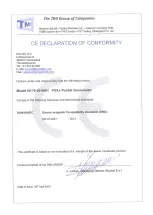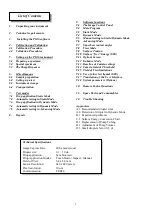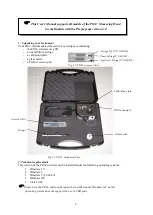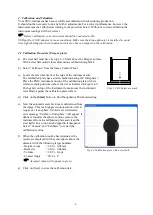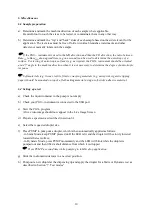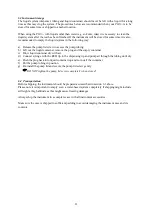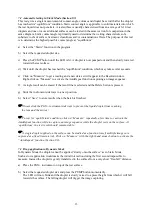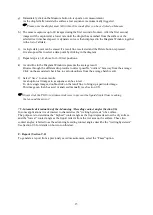
3
1.
Unpacking your instrument
2.
Technical requirements
3.
Installing the PGX+software
4.
Calibration and Validation
4.1 Calibration Procedure
4.2 Validation Procedures
5.
Setting up the PGX+instrument
5.1 Preparing a specimen
5.2 Special specimens
5.3 The Pump Dispenser
6.
Miscellaneous
6.1
Sample preparation
6.2
Setting up a test
6.3
Instrument storage
6.4
Transportation
7.
Test modes
7.1
Drop application Static Mode
7.2
Automatic testing in Static Mode
7.3
Drop application in Dynamic Mode
7.4
Automatic testing in Dynamic Mode
7.5
Automatic testing in Advancing Mode
8.
Reports
9.
Software functions
9.1
The Image Control Panel
9.2
Main Program
9.3
Static Mode
9.4
Dynamic Mode
9.5
Manual testing in Static/Dynamic Mode
9.6
Advancing Mode
9.7
SuperLow contact angles
9.8
View Mode
9.9
Surface Tension
9.10
Surface “free” Energy (SFE)
9.11
Options Screen
9.12
Enhance Mode
9.13
Baseline & Curtain settings
9.14
Camera Gain & Threshold
9.15
Field of View limitations
9.16
Use of other test liquids (SFE)
9.17
Translation of the User Interface
9.18
System parameters (Options)
10.
Remote Control functions
11.
Spare Parts and Consumables
12.
Trouble Shooting
Appendices
A.1 Recommended droplet sizes
A.2 Detection of droplet in Dynamic Mode
B.1 Experienced problems
C.1 Surface Energy Conversion Chart
D.1 Replacement of Pump Tubing
D.2 Adjustment of Pump Volume
D.3 Small droplets below 0.5 µl
List of Contents
Technical Specifications
Image Capture Rate:
80 frames/second
Droplet size:
0,1 – 10 µL
Drop application:
Synchronized
Drop Application Modes:
Touch Down / Impact / Manual
Field of View:
6,4 x 4,8 mm
Sensor Resolution:
640 x 480 pixels
Pixel resolution:
10 µm
Communication
USB2.0


